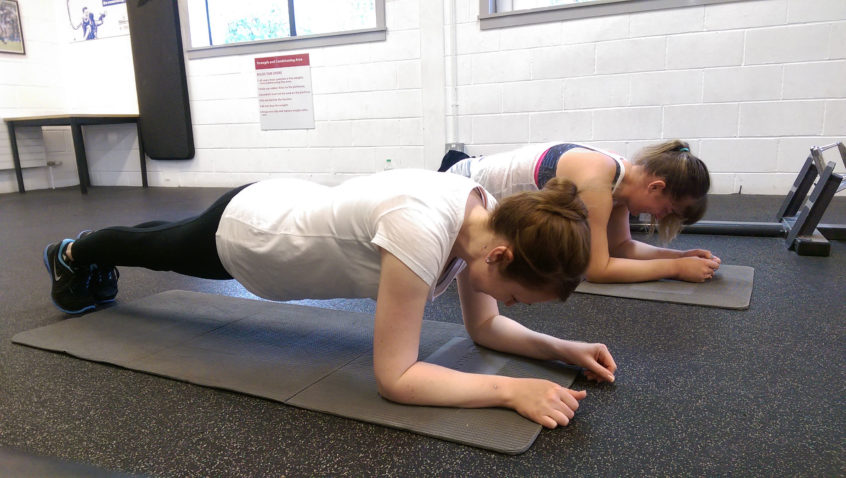The hip bone, so I’m told, is connected to the thigh bone, which, in turn, is connected to the knee bone. Interesting, right? But you know what they don’t tell you in the song? That more than just an assembly of calcium and collagen, arranged in a predetermined order, these individual bones comprise something pretty spectacular.
You’re amazing, didn’t you know? All those intricate bits doing what they do best, without anyone’s say so, all just to make you, well, you. You see, we’re not just pieces; not just bones and gristle and subcutaneous layers. We’re impossibly possible, every one of us, greater than the drum of our hearts.
I’ve always found it difficult to think of myself in those terms, particularly back in the desperate days when social anxiety engulfed my life. The problem, I imagined, was all in my head, bouncing from synapse to synapse without ever venturing further than my cerebellum. Of course, now I know better – or at least less worse. Mental health problems – like cockroaches – aren’t localised in that way; not for the person that’s inside them, mired in their fugue. Everything is affected and in effect: physically, psychologically, universally.
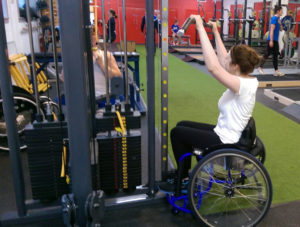
That picture of a person as a whole isn’t a particularly new concept; holistic philosophies date back to pre-Reiki days. But I’ve never really grasped its importance until recently, when I headed along to the Institute of Sport in Stirling for a little taste of what it’s like to be an athlete in Scotland.
My first appointment of the day was a Strength and Conditioning session with lead coach, Scott Crawford, and wheelchair racer, Meggan Dawson-Farrell. For this slightly podgy little slug, heading into a gym is, at the best of times, intimidating. But add in the pressure of high performance coaching in a space reserved for elite athletes and you’re talking malice aforethought. But, as is almost always the case in life, I needn’t have worried. Or at least not quite as much as I did.
To be a proper athlete for the day, I needed to follow a proper athlete’s training plan and, kindly, Meggan allowed me to stalk her for the morning. Or just bumble around behind her, looking a bit lost. I don’t think I’m giving away any secrets though by saying that Meggan is pretty incredible. A Team Scotland athlete, holding multiple Scottish records, who competes in everything from 100m to marathon distances, just reading about Meggan’s efforts makes me tired. And not only that: she’s a thoroughly lovely person too. Ever-patient as I bumped my borrowed wheelchair into pretty much everything within range, and happy to let me away with not quite doing the exercises with as much energy, strength or absolute enthusiasm as was she. Resistance machines, free weights, planks and a few bizarre floor exercises involving rolling discs and carpet friction later and I was a bit beaten. But not Meggan, who looked as irritatingly fresh by the end of the workout as she had on arrival.
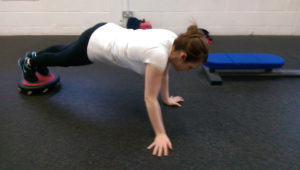
As I flounced around the gym, as inconspicuous as a leopard in leotard, Scott explained not only what I was meant to be doing but exactly why. Both he and his fellow coaches, supervise the training and development of lead athletes across the spectrum of sports in Scotland: not exactly the featherweight of workloads. But above that, Scott assured me, their ultimate focus is on the person within the athlete. Although their already-considerable remit charged them with working limbs to their limits and muscles to their core, the coaches don’t allow the moving parts to distract them from the static whole. The wellbeing of the individual, how their physical development impacts upon their life, is not only considered but incorporated.
While lifting most of my body weight without any signs of struggle, Meggan described how her training keeps her strong enough not only to tackle the bodily effects of spina bifida and hydrocephalus, but also the mental challenges. The 23 year-old smiled warmly as she spoke of operations, infections and even resurrections, the likes of which no young woman should ever have to endure, crediting her survival to a robust, strong body and the sport that soothes her mind.
I left the scary gym that morning feeling slightly embarrassed by my athletic ineptitude in the presence of the likes of Robbie Renwick and Ross Murdoch, but also revived by the attitudes with which I was met. That room of big weights and bigger ability wasn’t the torture chamber I had once imagined. It was a haven; albeit one with a sweaty undertone.
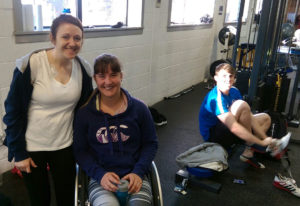
I should probably stop at this point to mention that I don’t have the best relationship with food. We’re not estranged as such, we just don’t spend much time in each other’s company. Unless you’re chocolate, move along, past the taste buds to sustain my bodily functions in that way you do so well. But don’t expect me to enjoy you; I’m not that way inclined. You can imagine then that the prospect of a session with top nutritionist, Irene Riach, wasn’t a dream made real.
I’m guessing I wasn’t exactly Irene’s usual fodder either. Her clientele has traditionally included top flight football players from across the UK and the rest of the best so this nobody bumbling in without a carb to her name was probably not quite the body she would normally know. But, on sitting down with Irene and trying not to glance at the complex nutrition plan on her laptop screen, I was instantly calmed by her easy chat and the clearly-loved cup of tea in her hand. If caffeine’s alright, I’m alright.
In a conversation that meandered from the historical functionalities of bee-keeping to the multi-disciplinary working practices, Irene somehow managed to sneak some fundamental tips on nutrition into my consciousness without me actually noticing. Shameless! As we chatted about the benefits of balance in all things, Irene explained to this philistine her role in an athlete’s progress: how she enables them to cut weight healthily over time or redresses their dietary imbalances to best improve their output. And all while considering the effect on the individual and their own unique physiology. There was a pattern emerging.
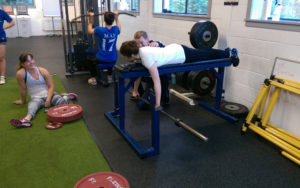
It emerged like an Escher during my next session: an hour that somehow spread over two with Laura Carey, one of Sport Scotland’s dedicated Performance Psychologists. Mental health isn’t so much my speciality as my obsession, which in itself probably isn’t particularly mentally healthy. But spending time with someone so committed to improving the productivity of athletes through not their sporting technique but their coping techniques, really spoke to my inner basket case. Admittedly, I had no idea what a Performance Psychologist actually does in practical terms, but that was soon remedied as Laura gave me examples of the kind of interventions she and her colleagues can make. Backed up by the clinical team, Laura balances what an athlete needs at that specific time to better deal with the vast pressures of competition to ensure that their mental state fully supports their physical prospects. So no big deal then, eh? I mean, I once filed a celebrity’s tax return so we’re definitely in the same professional ballpark.
After a lunch of which even Irene would be proud, I tiptoed upstairs to my final appointment of the day, hoping that Mandy Belch had forgotten my visit. Unfortunately, the consummate professional had not only remembered but had prepared for my arrival. A girl can’t catch a break. Physiotherapy, you see, is a worry. My joints protest their very existence and my posture works hard to support gravity’s efforts. Basically, I’m a skeletal calamity. Most days I’m fine with that. But then comes the day I’m lying on a table being puppeteered by the Senior Physiotherapist of Sport Scotland, and, that day, I’m no longer fine with it. Especially when the opening gambit is, ‘let’s pretend you’re a boxer’. Even my humerus laughed at that one.
But pretend we did. And as a boxer, I was ensconced in the rigmarole that is range of movement analysis. Now, I’m a bit of a swot. Fine, I’m a total swot. Tests are my thing and less than 100 percent demands a recount. But tests in which my long-neglected body is the chief subject; well, colour me failure. Mandy manipulated my limbs that way and this, describing the varying injuries and propensities that would cause a boxer, in particular, to suffer certain weaknesses. By the time my chin had touched my tibia and I was put back together again, I had learned two things. From the collarbone down, I’m golden. Upwards though, there’s no precious metal quite dense enough to describe my flexibility. Mandy reassured me though that the damage wasn’t permanent as long as I regularly use the exercises given and don’t sit at a computer all day. Well, one out of two ain’t bad…
I’m in no way a defeatist; be warned, I don’t really give up on anything, preferring instead to believe everything is just a matter of time and effort. But, I must admit, I really thought my chance of ever being an athlete had long since passed. Even in the midst of trying the seventeen Glasgow 2014 sports, I never really felt like my star was about to shine brightly. But spending time at the Institute of Sport, enveloped in their world, gave me an insight that I’d never had before. It turns out, the goals of an athlete are much the same as my own – to be healthy, strong and happy, and to perform to the limits of their own capabilities.
So maybe there’s a little athlete in me, after all.
Paula.

